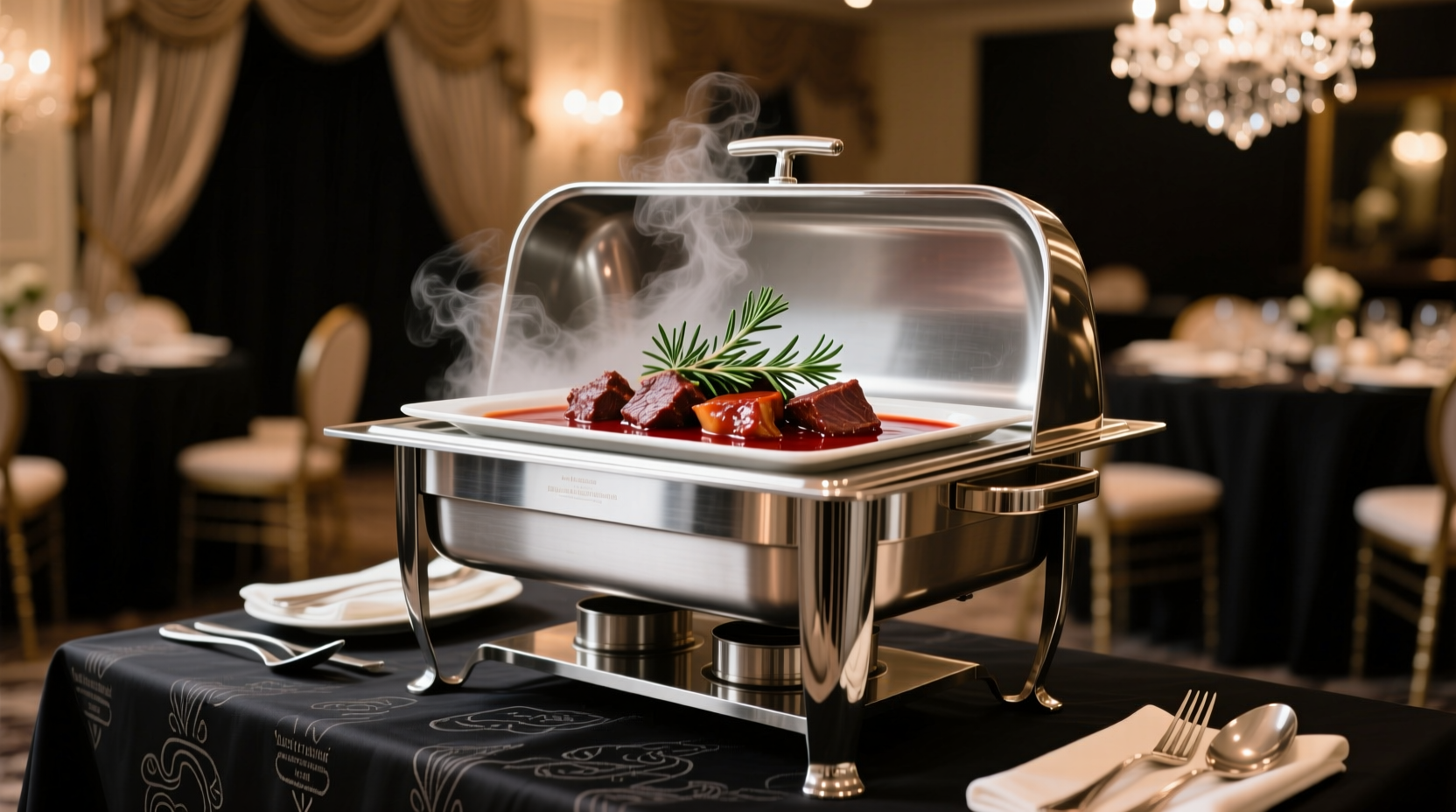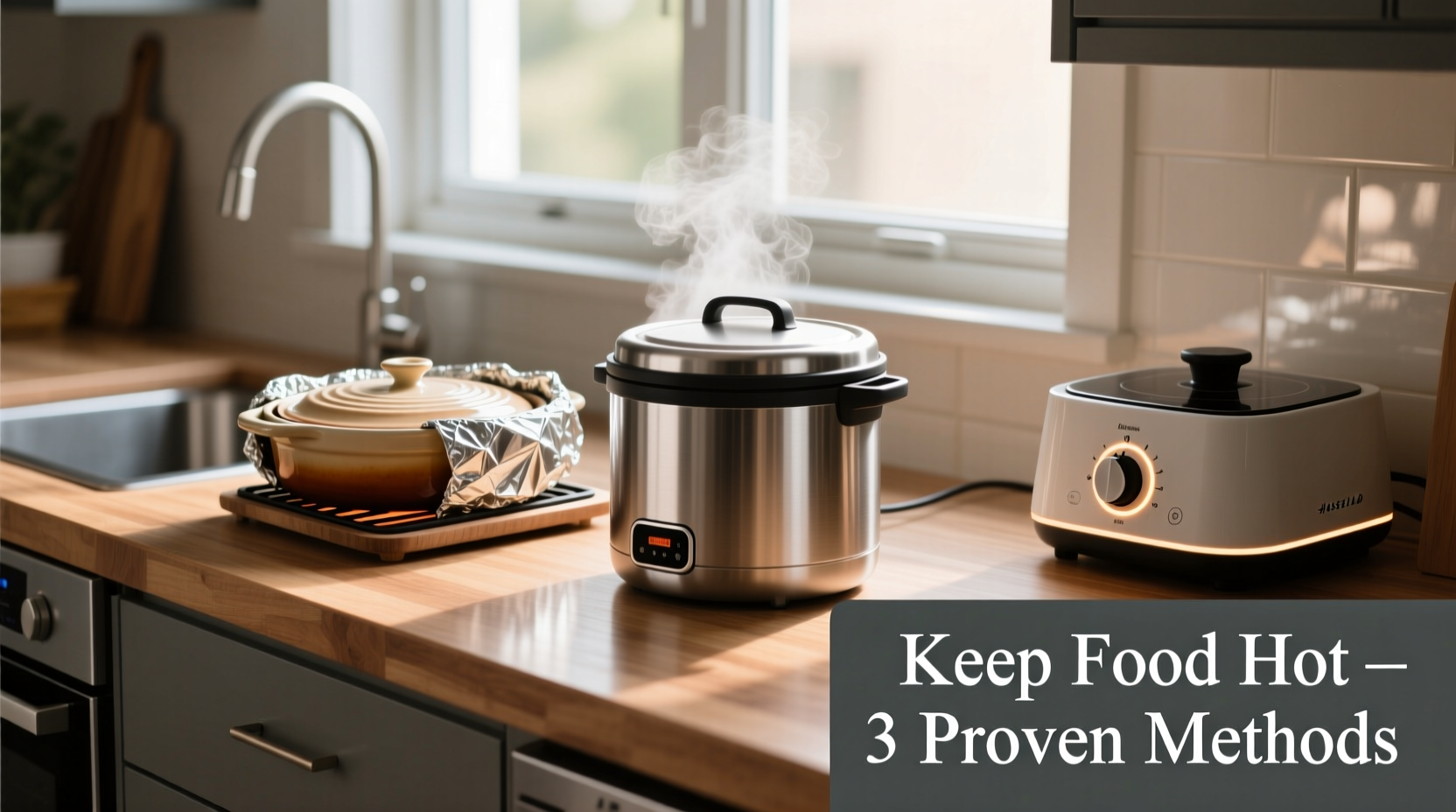Keep food hot by maintaining temperatures above 140°F (60°C) using insulated containers, warming trays, or chafing dishes with heat sources. For home use, wrap dishes in towels and place in a preheated oven at lowest setting; for professional settings, use commercial warming equipment with precise temperature controls.
Nothing ruins a meal faster than lukewarm food. Whether you're hosting a dinner party, catering an event, or simply trying to time multiple dishes perfectly, maintaining proper food temperature is essential for both safety and enjoyment. This guide delivers science-backed methods that professional chefs and home cooks use to keep food hot without compromising quality.
Immediate Temperature Preservation (First 30 Minutes)
When food comes off the heat, the clock starts ticking. The first 30 minutes are critical for preventing rapid temperature drop. Here's what to do immediately after cooking:
- Pre-warm your serving dishes - Fill with hot water for 2-3 minutes before adding food
- Use the lid strategy - Cover dishes immediately; this simple step retains 30% more heat
- Strategic plating - Arrange food tightly together rather than spreading thinly
- Aluminum foil wrap - Creates a reflective barrier that reduces radiant heat loss
According to USDA Food Safety and Inspection Service guidelines, cooked food enters the danger zone (40°F-140°F) within two hours, making immediate heat retention crucial for safety.
Short-Term Solutions (30-90 Minutes)
For situations where food needs to stay hot for the duration of a typical meal service:
| Method | Temperature Maintenance | Best For | Limitations |
|---|---|---|---|
| Insulated food carriers | 90-120 minutes above 140°F | Transporting meals | Requires preheating containers |
| Oven on warm setting | 60-90 minutes above 140°F | Home cooking | Can dry out food if not covered |
| Slow cooker on low | 2-4 hours above 140°F | Moist dishes (stews, soups) | Not suitable for dry foods |
| Hot water bath | 45-75 minutes above 140°F | Sauces, custards | Requires monitoring water level |
University of Minnesota Extension research shows that preheating containers to 160°F before adding hot food extends safe holding time by 40% compared to room-temperature containers.
Professional-Grade Long-Term Solutions
For events requiring food to stay hot for extended periods, professional techniques deliver reliable results:
Chafing dishes with fuel sources - The industry standard for catering. When properly set up with water in the base and appropriate fuel cans, they maintain 140°F+ for 2-4 hours. Key to success: Use the correct number of fuel cans (one per 12" pan) and check water levels every 90 minutes.
Countertop warming trays - Electric units with precise thermostats maintain consistent temperatures. Look for models with moisture control features to prevent drying. Commercial units maintain 140°F-180°F with ±5°F accuracy.

Critical Food Safety Considerations
Keeping food hot isn't just about quality—it's a food safety imperative. The FDA Food Code specifies that hot food must be held at 135°F or above to prevent pathogen growth. Key safety practices:
- Use a calibrated food thermometer to verify temperatures every 30 minutes
- Never use the "feel test"—human perception of warmth is unreliable
- Replenish food in small batches rather than continually adding to existing servings
- Discard food that falls below 135°F for more than 1 hour
According to the Centers for Disease Control and Prevention, improper temperature control accounts for 22% of foodborne illness outbreaks in non-commercial settings.
Common Mistakes That Sabotage Heat Retention
Even with the right equipment, these errors undermine your efforts:
- Overfilling warming equipment - Reduces air circulation and creates cold spots
- Using inappropriate containers - Thin metal conducts heat away faster than ceramic
- Opening lids too frequently - Each opening causes a 10-15°F temperature drop
- Ignoring humidity factors - Dry heat environments accelerate moisture loss
Advanced Techniques for Home Cooks
Professional kitchens use these accessible methods that work equally well at home:
The towel wrap method - Place hot dishes on a towel, wrap another towel around the sides, then cover with foil. This creates an insulating air pocket that extends warmth by 45-60 minutes.
Cast iron retention - Serve food in preheated cast iron dishes, which maintain temperature 25% longer than standard ceramic due to superior heat capacity.
Strategic reheating - For dishes needing extended holding, use 15-second microwave bursts at 30-minute intervals rather than continuous warming.
When to Let Food Rest Instead
Not all foods benefit from prolonged warming. Some items actually improve when allowed to rest at controlled temperatures:
- Meats - Resting at 120°F-130°F for 10-15 minutes allows juices to redistribute
- Breads - Cooling slightly improves texture development
- Delicate sauces - Over-warming breaks emulsions
Understanding these context boundaries prevents you from applying heat retention methods where they would degrade food quality.











 浙公网安备
33010002000092号
浙公网安备
33010002000092号 浙B2-20120091-4
浙B2-20120091-4